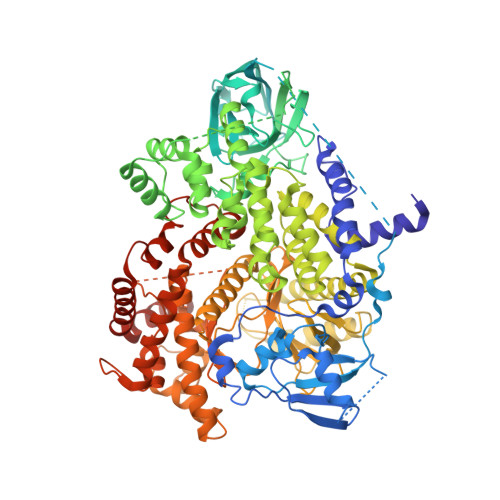Potent and selective inhibitors of PI3K-delta: obtaining isoform selectivity from the affinity pocket and tryptophan shelf
Sutherlin, D.P., Baker, S., Bisconte, A., Blaney, P.M., Brown, A., Chan, B.K., Chantry, D., Castanedo, G., DePledge, P., Goldsmith, P., Goldstein, D.M., Hancox, T., Kaur, J., Knowles, D., Kondru, R., Lesnick, J., Lucas, M.C., Lewis, C., Murray, J., Nadin, A.J., Nonomiya, J., Pang, J., Pegg, N., Price, S., Reif, K., Safina, B.S., Salphati, L., Staben, S., Seward, E.M., Shuttleworth, S., Sohal, S., Sweeney, Z.K., Ultsch, M., Waszkowycz, B., Wei, B.(2012) Bioorg Med Chem Lett 22: 4296-4302
- PubMed: 22672799
- DOI: https://doi.org/10.1016/j.bmcl.2012.05.027
- Primary Citation of Related Structures:
4EZJ, 4EZK, 4EZL - PubMed Abstract:
A potent inhibitor of PI3Kδ that is ≥ 200 fold selective for the remaining three Class I PI3K isoforms and additional kinases is described. The hypothesis for selectivity is illustrated through structure activity relationships and crystal structures of compounds bound to a K802T mutant of PI3Kγ. Pharmacokinetic data in rats and mice support the use of 3 as a useful tool compound to use for in vivo studies.
Organizational Affiliation:
Genentech, Inc., 1 DNA Way, South San Francisco, CA 94080, USA. sutherd1@gene.com















